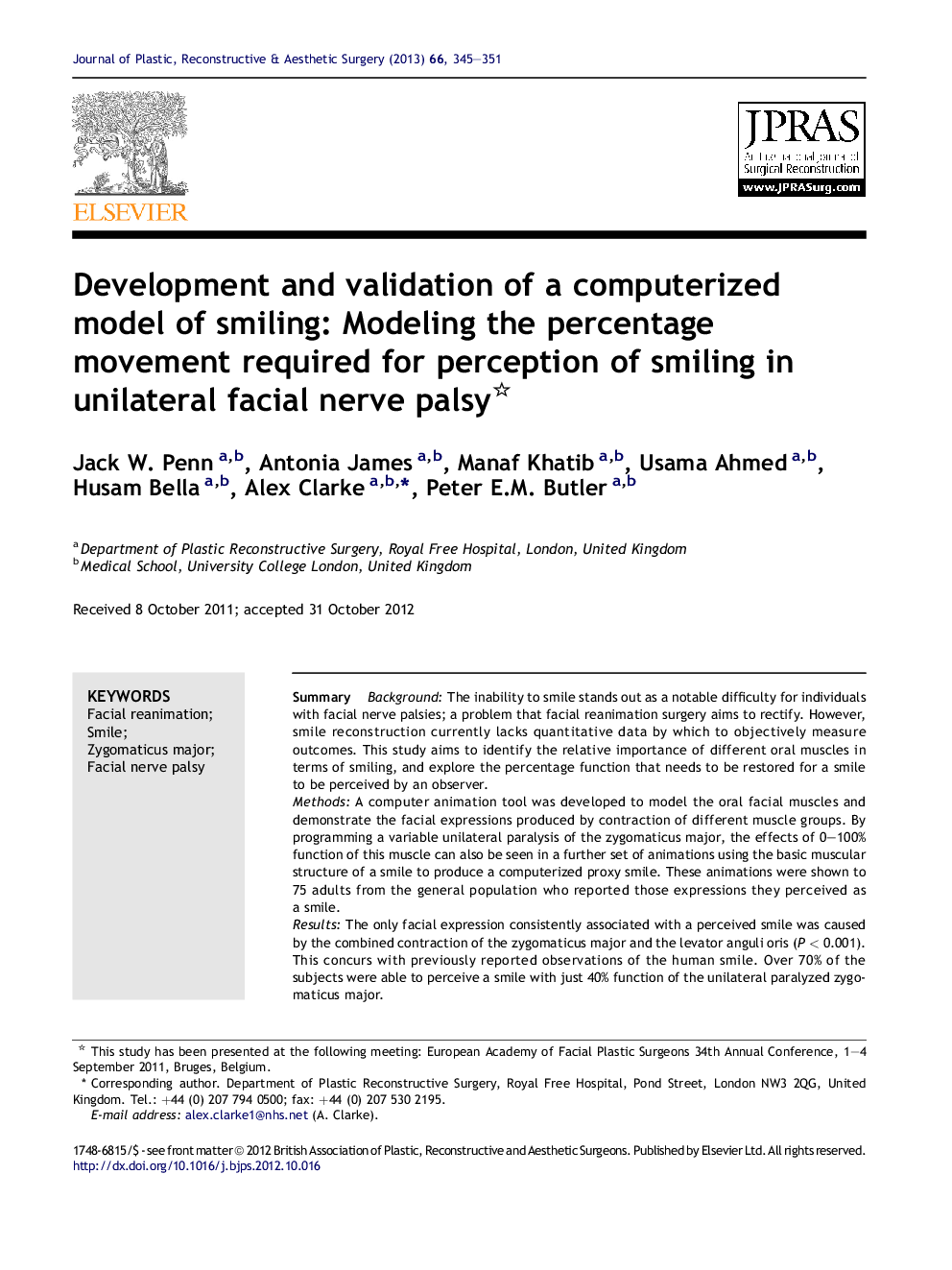| کد مقاله | کد نشریه | سال انتشار | مقاله انگلیسی | نسخه تمام متن |
|---|---|---|---|---|
| 4117956 | 1270321 | 2013 | 7 صفحه PDF | دانلود رایگان |

SummaryBackgroundThe inability to smile stands out as a notable difficulty for individuals with facial nerve palsies; a problem that facial reanimation surgery aims to rectify. However, smile reconstruction currently lacks quantitative data by which to objectively measure outcomes. This study aims to identify the relative importance of different oral muscles in terms of smiling, and explore the percentage function that needs to be restored for a smile to be perceived by an observer.MethodsA computer animation tool was developed to model the oral facial muscles and demonstrate the facial expressions produced by contraction of different muscle groups. By programming a variable unilateral paralysis of the zygomaticus major, the effects of 0–100% function of this muscle can also be seen in a further set of animations using the basic muscular structure of a smile to produce a computerized proxy smile. These animations were shown to 75 adults from the general population who reported those expressions they perceived as a smile.ResultsThe only facial expression consistently associated with a perceived smile was caused by the combined contraction of the zygomaticus major and the levator anguli oris (P < 0.001). This concurs with previously reported observations of the human smile. Over 70% of the subjects were able to perceive a smile with just 40% function of the unilateral paralyzed zygomaticus major.ConclusionsThese results present an objective target for facial reanimation surgery by which outcomes may be measured. This computerized model also provides a valuable tool for patient education during pre-operative consent.
Journal: Journal of Plastic, Reconstructive & Aesthetic Surgery - Volume 66, Issue 3, March 2013, Pages 345–351